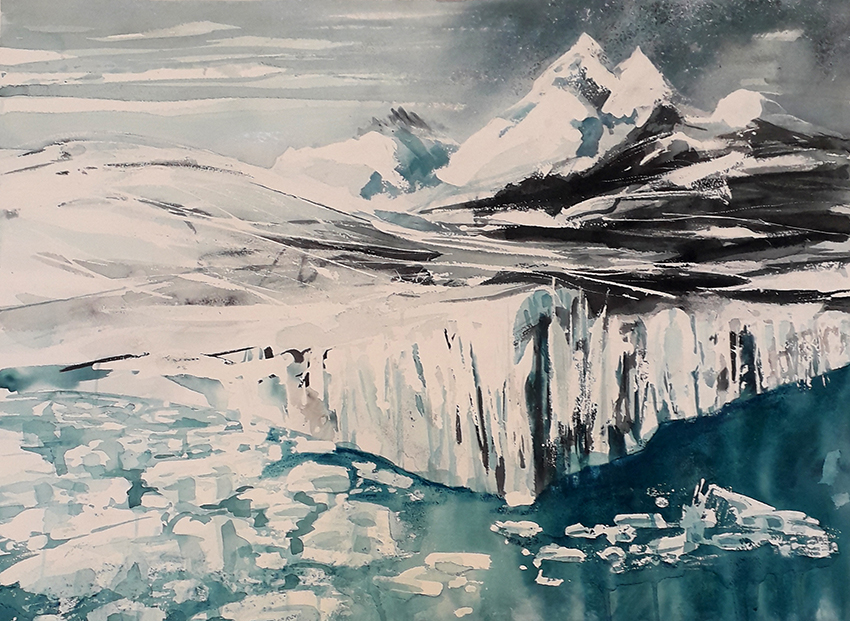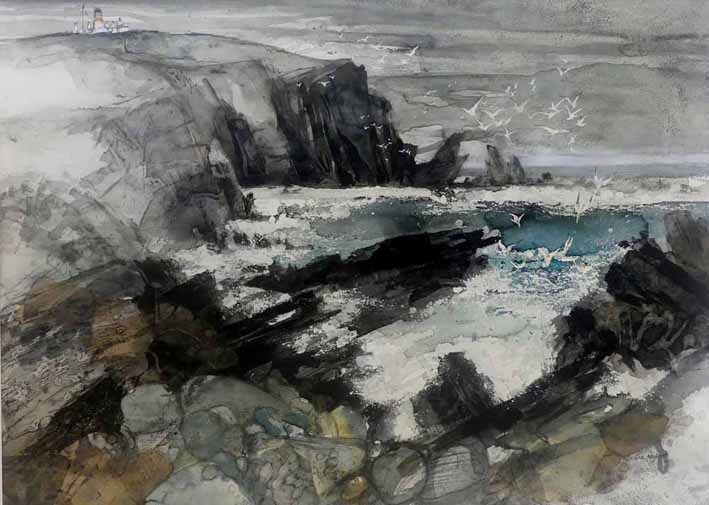What a lovely surprise it was on a slightly grey and damp October morning, to learn that I was the recipient of the British Trust for Ornithology (BTO) Award at the Society of Wildlife Artists annual exhibition at Mall Galleries in London.
Through the Gap, mixed media on paper, 55cm x 75cm
My winning work ‘Through the Gap’ had been made out on the blustery cliffs of the Isle of May during the spring when seabird nesting season is at its busiest and most raucous. The island is a place I’ve come to know well over many years and have shared the joys and fears of conservation staff and researchers based there who monitor the wildlife populations of the island. It is a breath taking and precious sanctuary for many different species who face increasing pressure from human impact on their lives and habitat.
On these spring days the sky is a constant whirl, filled with the rush of wingtips catching the breeze, the constant clamour from the nest ledges and rushing motion. Around the stacks the movement seems to become even more frenetic as birds narrowly avoid collision, all making for the same narrow gaps and flightlines. It is like watching a delicate sky dance that teeters on the brink of disaster at every turn.
And I’m delighted that the work resonated with the BTO who work to secure a better future for birds and nature, using science, monitoring and data to inform good environmental decisions, inspiring others with the wonder of birds.

























































































